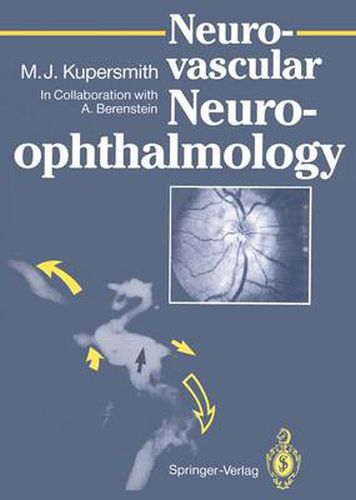Readings Newsletter
Become a Readings Member to make your shopping experience even easier.
Sign in or sign up for free!
You’re not far away from qualifying for FREE standard shipping within Australia
You’ve qualified for FREE standard shipping within Australia
The cart is loading…






Neuro-ophthalmological symptoms frequently arise in disorders which alter
the intracranial and intraorbital circulation. Because of the wide range of sensory and cognitive systems involved in vision and eye
movements, visual disturbances are typically found in the
common vascular disorders, such as atherosclerosis, migraine,
and aneurysms, but can also result from practically any, common or rare,local or systemic vascular disorder. The dysfunction can be part of a largersyndrome or the predominant clinical abnormality. Many of the newer
concepts concerning the diagnosis and treatment of
neurovascular disorders have evolved in consequence of advances
in techniques for neuroimaging such as MRI; methods of measuring
systemic coagulation and inflammation; and superselective catheterization ofabnormal blood vessels and vascular lesions. The neuroophthalmological
evaluation of clinical signs and symptoms often leads to
accurate localization and diagnosis of the lesion. Many of
these clinical abnormalities, such as visual field defects and ocular
misalignments, can be quantified and followed to assess either the natural history of the disorder or the effects of therapies. No one medical
specialty can manage these neurovascular neuro-ophthalmological disorders
alone. The complexity of diagnosis and treatment planning requires a
multi- disciplinary team. This approach, bringing
ophthalmologists, neurosurgeons, and neurologists together to confer in
the management of these cases, has been pioneered by the authors’ group at the New York University Medical Center.
$9.00 standard shipping within Australia
FREE standard shipping within Australia for orders over $100.00
Express & International shipping calculated at checkout
Neuro-ophthalmological symptoms frequently arise in disorders which alter
the intracranial and intraorbital circulation. Because of the wide range of sensory and cognitive systems involved in vision and eye
movements, visual disturbances are typically found in the
common vascular disorders, such as atherosclerosis, migraine,
and aneurysms, but can also result from practically any, common or rare,local or systemic vascular disorder. The dysfunction can be part of a largersyndrome or the predominant clinical abnormality. Many of the newer
concepts concerning the diagnosis and treatment of
neurovascular disorders have evolved in consequence of advances
in techniques for neuroimaging such as MRI; methods of measuring
systemic coagulation and inflammation; and superselective catheterization ofabnormal blood vessels and vascular lesions. The neuroophthalmological
evaluation of clinical signs and symptoms often leads to
accurate localization and diagnosis of the lesion. Many of
these clinical abnormalities, such as visual field defects and ocular
misalignments, can be quantified and followed to assess either the natural history of the disorder or the effects of therapies. No one medical
specialty can manage these neurovascular neuro-ophthalmological disorders
alone. The complexity of diagnosis and treatment planning requires a
multi- disciplinary team. This approach, bringing
ophthalmologists, neurosurgeons, and neurologists together to confer in
the management of these cases, has been pioneered by the authors’ group at the New York University Medical Center.